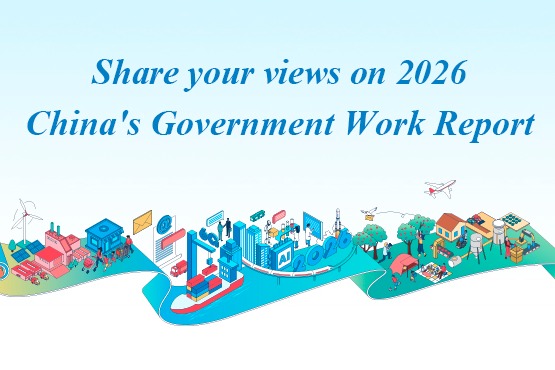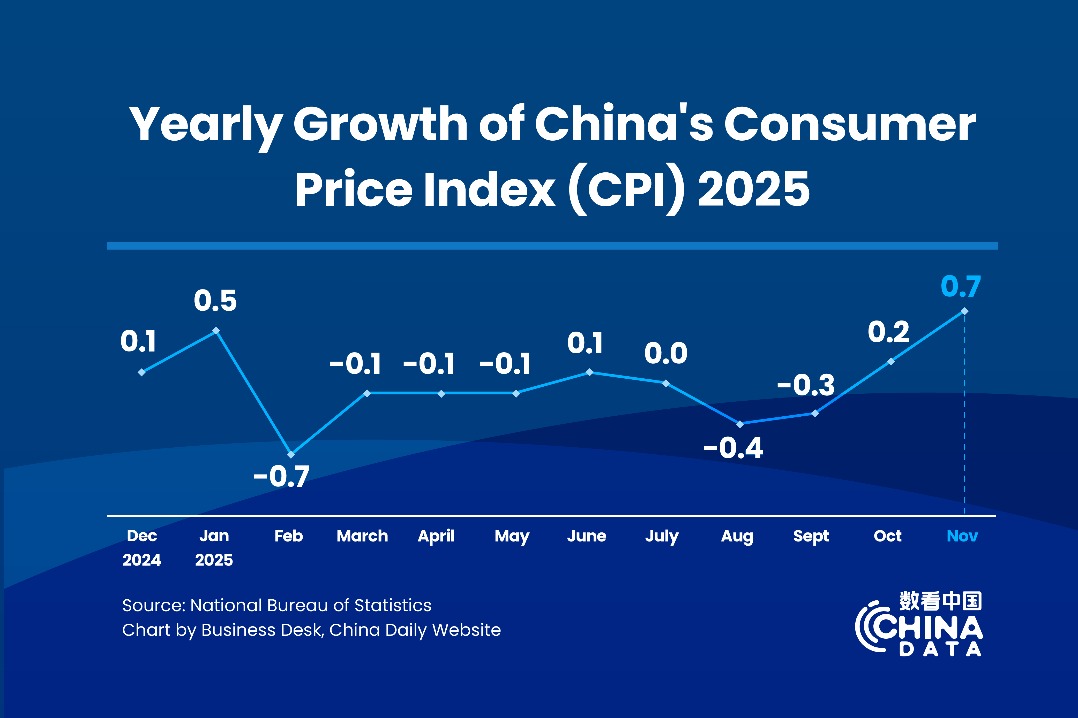Blueprint charts nation's development course


Global spotlight falls on 14th Five-Year Plan
China is in the global spot-light as it maps out the 14th Five-Year Plan (2021-25), which will set the tone for the country's economic and social development in the coming years.
The plan is being drawn up as the nation-the world's largest contributor to growth-continues to expand at an impressive pace.
The centerpiece of the blueprint is the "dual circulation" development pattern, first put forward in May.
"Domestic circulation", or the internal cycle of production, distribution and consumption, will be the mainstay of economic development while the domestic market is integrated with "international circulation" to promote the smooth two-way flow of goods and capital.
The plan will also focus on industrial upgrading, reforms to improve economic efficiency and quality, and a higher level of opening-up, according to analysts.
In August, the authorities started to seek the public's views on the contents of the plan, which will be discussed at the Fifth Plenary Session of the 19th Central Committee of the Communist Party of China, scheduled for Oct 26 to 29. The final version is expected to be approved by legislators at next year's two sessions-the annual meetings of China's top legislative and political advisory bodies.
The drafting of five-year plans began in 1953, four years after the founding of the People's Republic of China. The blueprints generally lay down detailed development targets and guidelines for economic, social, educational, environmental and other important issues.
The plans are a key way for the nation to better guide its social and economic development. They have also played a major role in helping it gradually shake off poverty.
Apart from a period of economic adjustment from 1963 to 1965, China has implemented 13 five-year plans since 1953, each one reflecting specific social and economic development conditions and positioning.
For example, the authorities devised the country's 1st Five-Year Plan (1953-57) as the country was making strenuous efforts to recover and upgrade the economy, which was underdeveloped and based on agriculture. The plan focused on transforming the nation from an agricultural economy into one based on the development of heavy industry.
To achieve the goal of becoming a strong industrial power, the five-year plans up to 1980 continued to focus on developing agriculture to ensure food supply and grain security and also expanding industry to build an independent and complete industrial system.
From the 6th Five-Year Plan (1981-85) onward, the blueprints, while trying to solve problems that arose during earlier stages of development, have been drawn up in tandem with the reform and opening-up drive and the attempt to shift to a market-oriented economy.
As the economy expanded rapidly, the importance of economic scale gradually gave way to the quality of development. As a result, greater emphasis has been placed in recent years on improving the quality of economic growth, innovation and balanced social and economic development.
For example, the 11th Five-Year Plan (2006-10) proposed upgrading the industrial structure and optimizing resource allocation, while the 12th Five-Year Plan (2011-15) emphasized education, and science and technology development, along with environmental protection.
The 13th Five-Year Plan (2016-20) put forward more comprehensive and balanced development goals. These emphasized inclusiveness and sustainable development through industrial upgrading, boosting consumption, increasing the urbanization rate, eliminating poverty, improving environmental protection, and strengthening governance.
Song Xiongwei, professor of political science at the Party School of the Central Committee of the CPC(National Academy of Governance), said: "Given the scale of economic activities in a country like China, coordination is very important. The five-year plans are vital method of governance for China to mobilize and allocate resources for society to push forward economic and social development."
The 13 five-year plans have contributed to the country's remarkable social and economic achievements and also reflected its significant advantages and unique governance experiences, Song added.
Since the People's Republic of China was founded in 1949, the nation has faced various challenges and difficulties at different stages of its development, Song said. Policymakers have been able to make targeted adjustments to solve problems and "blaze new trails", which has been evidenced in the focus of the five-year plans.
Now that China is the world's second-largest economy, the largest exporter and the biggest consumer market, the country has made significant headway in scientific and technological development, becoming a major global technology power. It is also a staunch advocate of globalization, contributing its experience to less-developed countries to help them advance through programs and initiatives, including the Belt and Road Initiative.
Given its stable and sustained social and economic development in the past seven decades, China has achieved "nothing but a miracle", Song said.
A wide range of people, including policymakers, experts and members of the public, take part in devising the five-year plans. "They represent the will of the people and the expectations and consensus of the whole of society," Song added.
New plan's goals
The contents of the 14th Five-Year Plan are not yet known. However, experts said that in addition to setting key economic and social development goals, it is expected to emphasize the pursuit of high-quality development and improving national competitiveness.
Supply-side structural reform and industrial upgrading will be continued to further improve economic restructuring, foster the domestic consumer market, promote integrated regional development, encourage innovation, protect the environment, and improve governance.
This year, the Chinese economy has faced starkly different challenges, both at home and overseas, due to the COVID-19 pandemic, which has paralyzed production, consumption and trade. There has also been rising anti-globalization sentiment and trade protectionism, geopolitical tensions and lingering disputes between China and the United States.
Liang Haiming, chairman of the China Silk Road iValley Research Institute, based in Guangzhou, capital of Guangdong province, said: "The pandemic has had an all-around impact on global supply, industrial and capital chains. Domestically, China has faced challenges such as weak consumption, relatively low income levels and an aging population. The decoupling efforts by the US may also affect China's growth." As a result, the 14th Five-Year Plan is expected to focus on establishing the "dual circulation" development pattern.
However, Justin Yifu Lin, honorary dean of the National School of Development at Peking University and former chief economist at the World Bank, said "dual circulation" is not aimed at coping with short-term challenges, but is a natural result of the Chinese economy expanding.
"The larger an economy is, the bigger its domestic market is and the more its GDP (growth) will rely on domestic circulation," he said.
In 2006, China's GDP accounted for 5.3 percent of the world's total, while last year the corresponding proportion was 16.4 percent. As its GDP grows, the proportion of exports to overall GDP will naturally decline and that of tertiary industry will rise, Lin said.
"China's economic development will increasingly depend on domestic circulation, and the exports-to-GDP ratio will gradually decline to the levels of the United States and Japan," he added.
China put forward the concept of "dual circulation" not as a result of its exports slowing this year, but because it has reached a stage where it will rely more on the domestic market to generate growth, Lin said. "It is not a passive choice, but a reflection of the law of current economic development."
Liang, also dean of the Hainan University Belt and Road Research Institute, said that to better implement the "dual circulation" pattern, the new plan can dovetail with the country's regional development and free trade zone strategies to rebuild the domestic industrial chain and stabilize the economy.
Transportation networks should also be strengthened to "guarantee the connection of domestic and international cycles", including the home market and those in countries taking part in the Belt and Road Initiative, he added.
Wang Tao, chief China economist at Swiss bank UBS, said that in addition to "dual circulation" the 14th Five-Year Plan is expected to push structural reforms and continue to stress environmental protection and the prevention of risks in the financial and real estate sectors.
"China may also increase input in science and technology, research and development, and education," she said. "Its investment in basic research and frontier technology fields, such as semiconductors, robotics and high-end manufacturing, is expected to increase and further push development of the digital economy."
Wang said the country may reduce its GDP growth goals in the next five years and place more emphasis on economic rebalancing and the quality of development. "We forecast that China's real GDP growth could slow to 5 percent in this period," she added.
The plan may also see the nation further open up its economy despite escalating external challenges, she said.
"We expect China to further expand opening-up in most fields and industries in the coming five years and continue to sharply shorten the negative list (areas forbidden to investors) and eliminate various non-tariff barriers," Wang added.
Li Xiang contributed to this story.




































